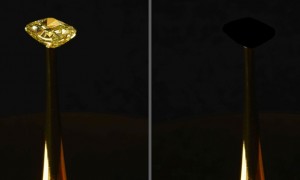以色列首个非利士人古墓或解开圣经中千古谜团
以色列最近的一项考古发现或将解开《圣经》中的千古谜团:非利士人来自哪里?挖掘圣经中的城市阿什凯隆的考古队表示他们发现了首个非利士人墓地。
A recent archaeological discovery in Israel might help solve an enduring biblical mystery: where did the ancient Philistines come from? A team of archaeologists excavating the site of the biblical city of Ashkelon say they have found the first Philistine cemetery ever to be discovered.
It's an archaeologist's dream: to discover something that changes the way we think about history.
A team in Israel have unearthed an ancient cemetery, which they say will unravel the mystery of the Philistines.
Now they are performing DNA, radiocarbon and biological distance tests on bone samples found at the cemetery, dating back 11th to 8th century BC, to help resolve a debate about the Philistines' geographical origins.

A team in Israel have unearthed an ancient cemetery, which they say will unravel the mystery of the Philistines.
"The site was discovered a few years ago: we were doing some probes outside the city walls. I was here, digging some probes with the machines to see the depth of occupation. I came down on some sandy soil and within that sandy soil we found some human remains associated with Iron Age pottery. The opportunity to discover the Philistine Cemetery was very exciting," said Adam Aja, group supervisor of Philistine Cemetery of Ashkelon.
In the bible, the Philistines are depicted as the ancient Israelites' arch enemy - a foreign people who migrated from lands to the west and settled in five main cities in Philistia -- which today is southern Israel and the Gaza Strip.
Their legacy lives on in the name Palestine, a term the Romans gave to the region in the 2nd century AD (CE), and used today by modern-day Palestinians.
Archaeologists have long believed that the Philistines came from the Aegean region, based on the pottery remains found in excavations of Philistine sites.
The excavation of the cemetery has also shed light on Philistine burial practices.
"This is how Philistines treated their dead, and it's the code book to decoding everything around us," Adam Aja said.
Near the face, Philistines were buried with perfume bottles.
Near the legs were jars that likely held oil, wine, or food.
In some cases, archaeologists found Philistines buried wearing necklaces, bracelets, earrings, and even toe rings. Some were even buried with their weapons.
The discovery was made a few years ago but was only announced now at the close of a thirty-year excavation project by the Leon Levy Expedition. It also involved a team of archaeologists from Harvard University, Boston College, Wheaton College in Illinois and Troy University in Alabama.
Finds from the cemetery are on display at the Rockefeller Archaeological Museum in Jerusalem.







